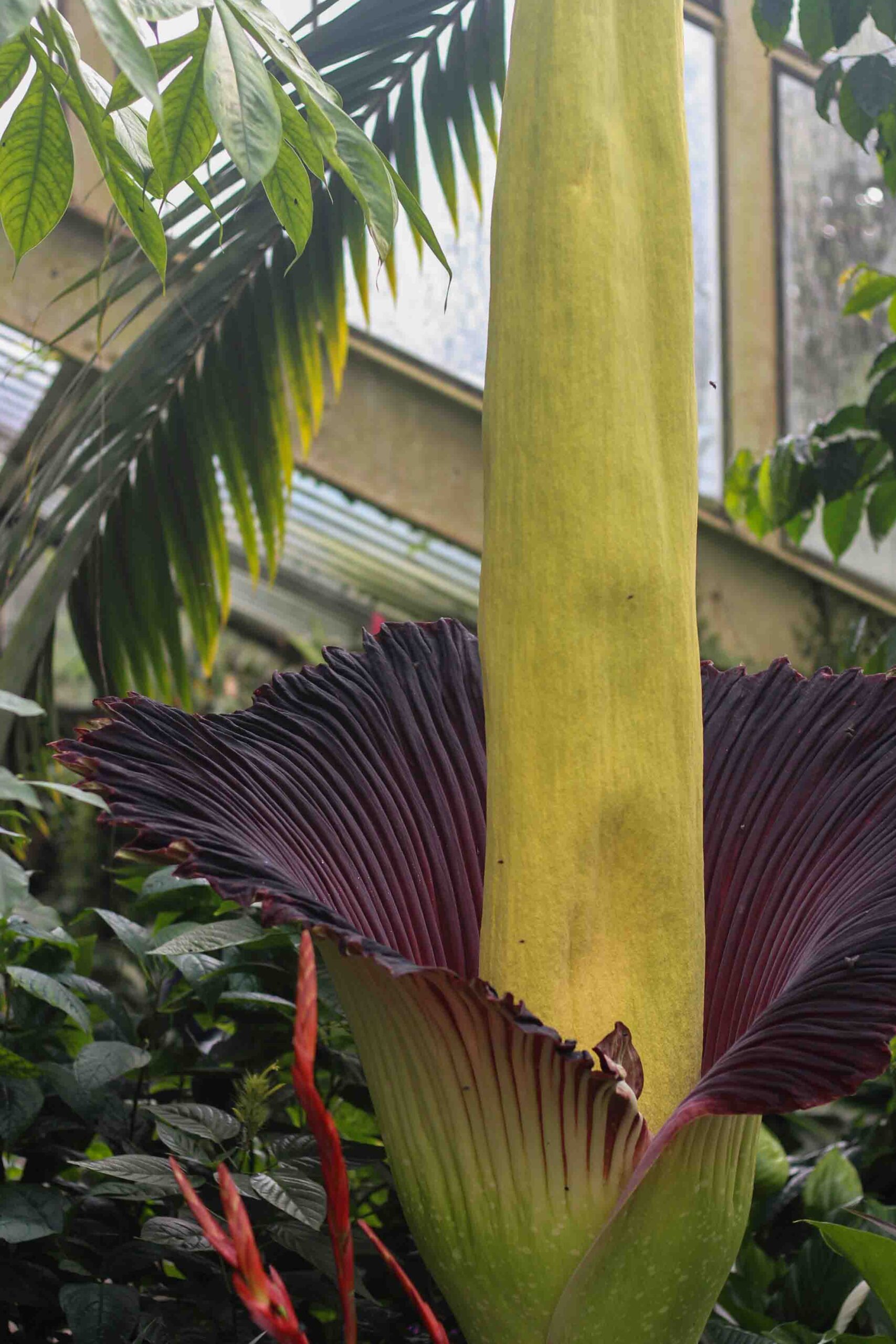By enormous luck, a spur-or-the-moment decision to escape to London’s Kew Gardens on a sunny Friday had me running into the blooming event of the season: the opening of the Corpse flower’s massive bloom.
We didn’t know it was going to be there, but we did smell it. Even before we saw it. The second we walked in, I turned to my friend and commented that something was a bit off with the freshness of the air.
But to be honest, we still nearly walked straight past us. Mostly because there was a crowd gathering in front of the flower, and Covid times have my quietly but quickly shuffling away from anything with more than three people.
Luckily, the corpse flower was doing its most not to be missed.

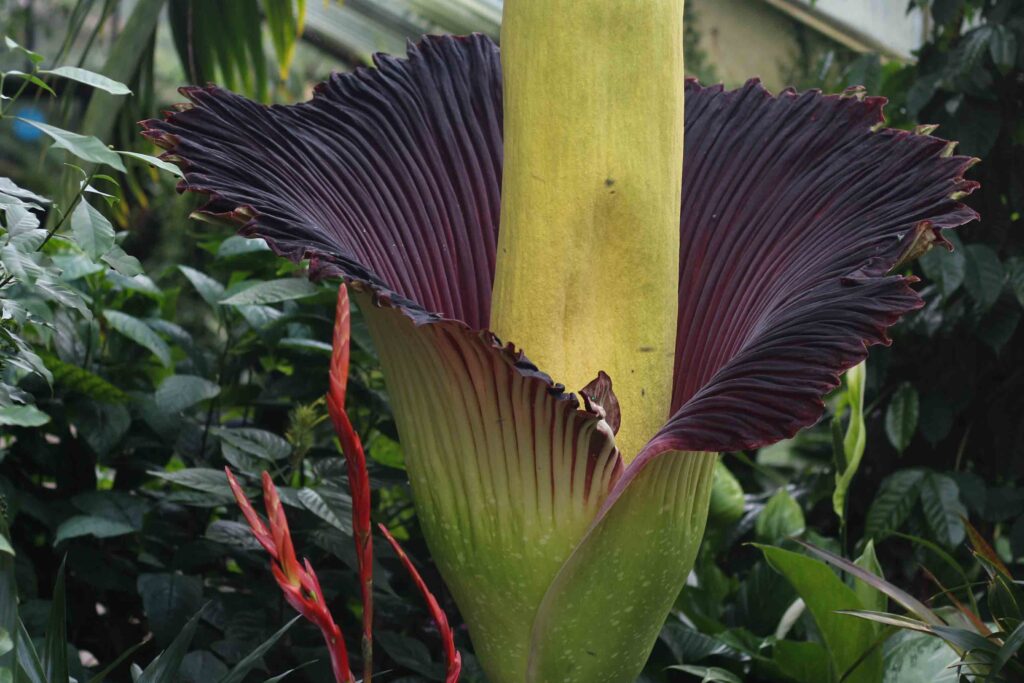
Behold. The giant corpse flower, with its coloured spathe (a modified leaf/bract) covering the central flower-bearing spike (called a spandix).
The common name comes, quite rightly, from the filthy rotten smell that the flower emits- somewhere between dung and flesh to my delicate nostrils. All the better to attract flies with, my dears.
If you want to go with the latin name, that would be be Amorphophallus titanum.
With the ‘phallus’ part of the equation coming in here.

Is it becoming apparent that I should have packed a wider angle lens?
Measurements of the flower back in 2018 showed that one of the flowers reached a massive 3m in height, earning it a place in the Guinness Book of Records for largest flower. It also gets a place for ‘smelliest’, with the fleshy scents sensed up to 0.8 km away!
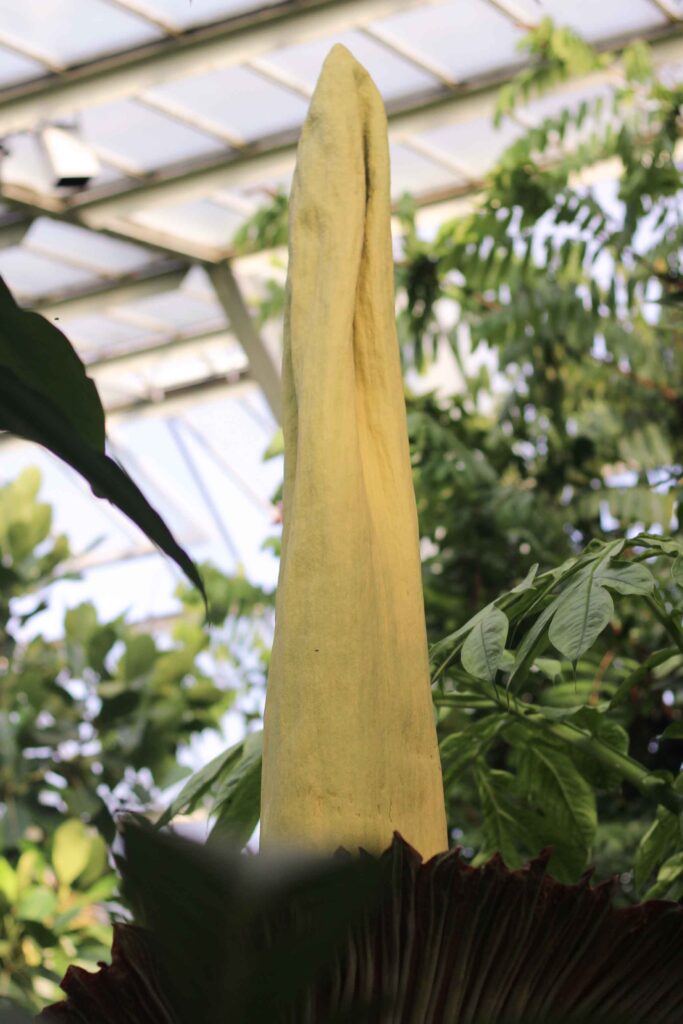
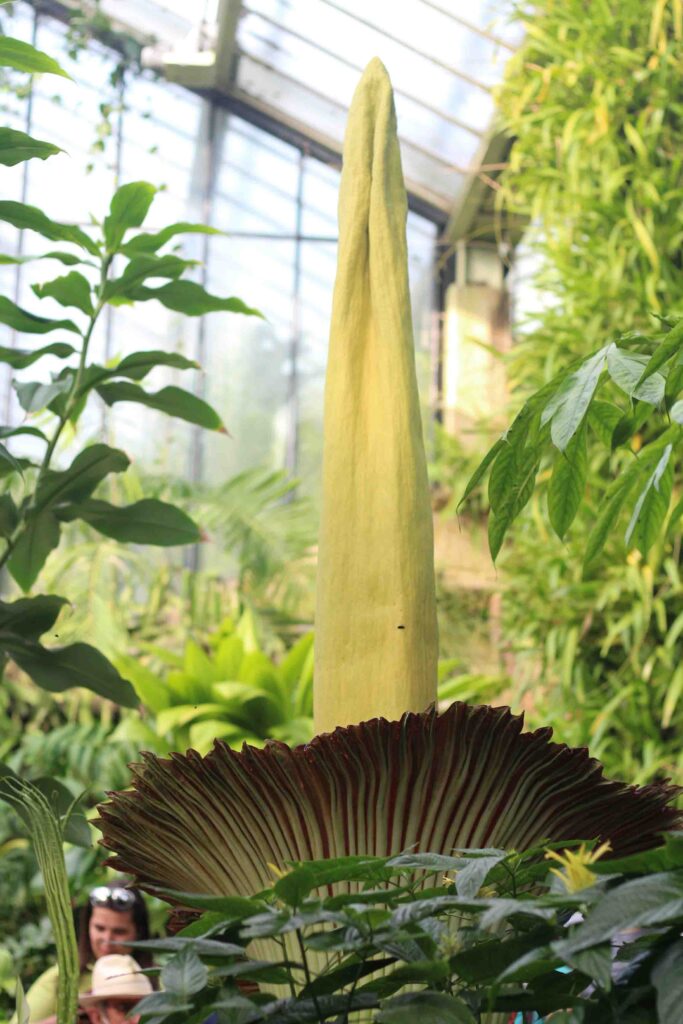
I DID manage to get a couple of shots from the back, and my friend kindly took a photo of my posing on her phone:
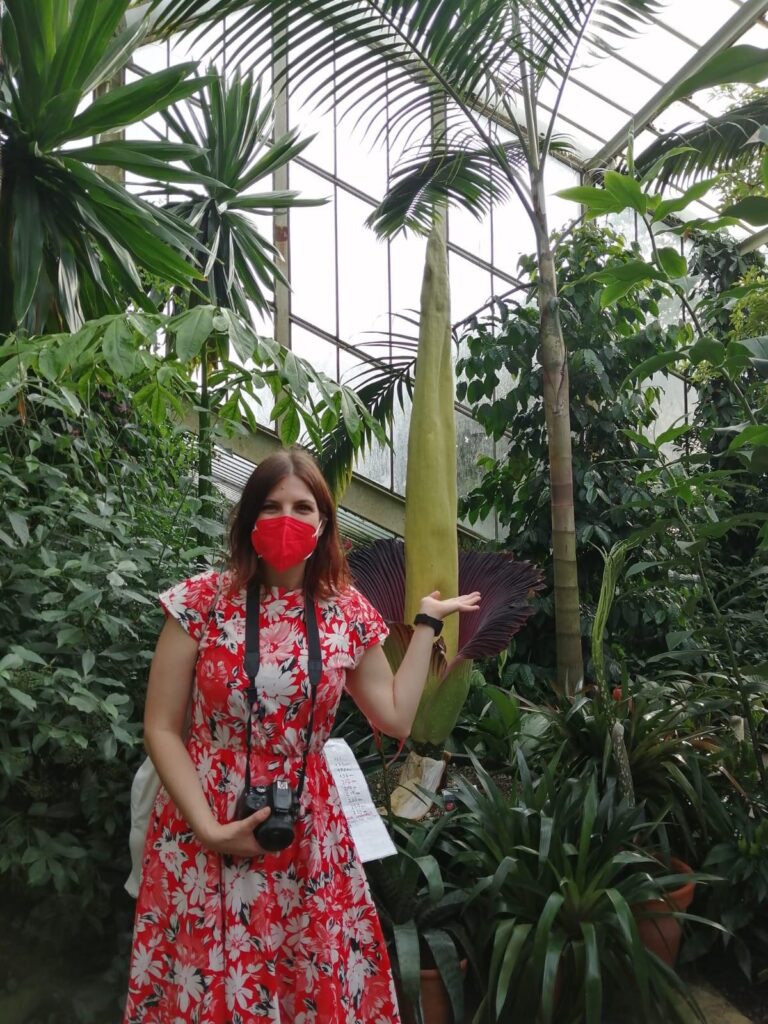
In the absence of my wide-angles, I tried to get in a bit closer… which to be honest, largely only served to get my face closer to the smell!


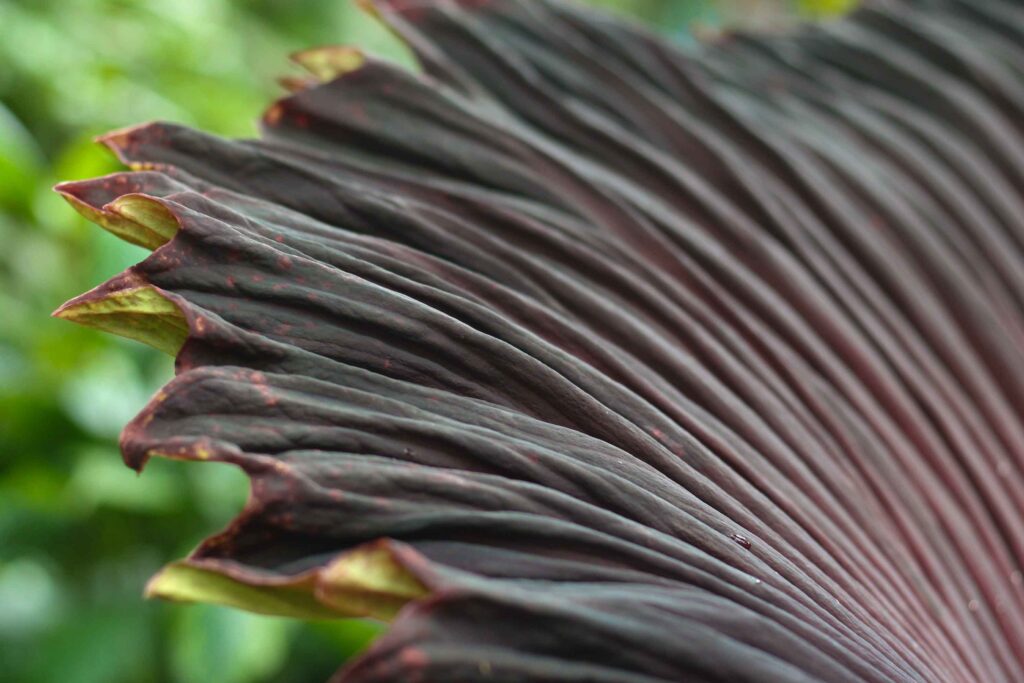


The final shot here shows the flower next to its leafy form – the vegetative growth (from a separate plant). Generally speaking, the plant requires 5-10 years of vegetative growth before reaching maturity and blooming, and then blooms only ever few-to-ten years after that (more regularly where conditions are optimal).
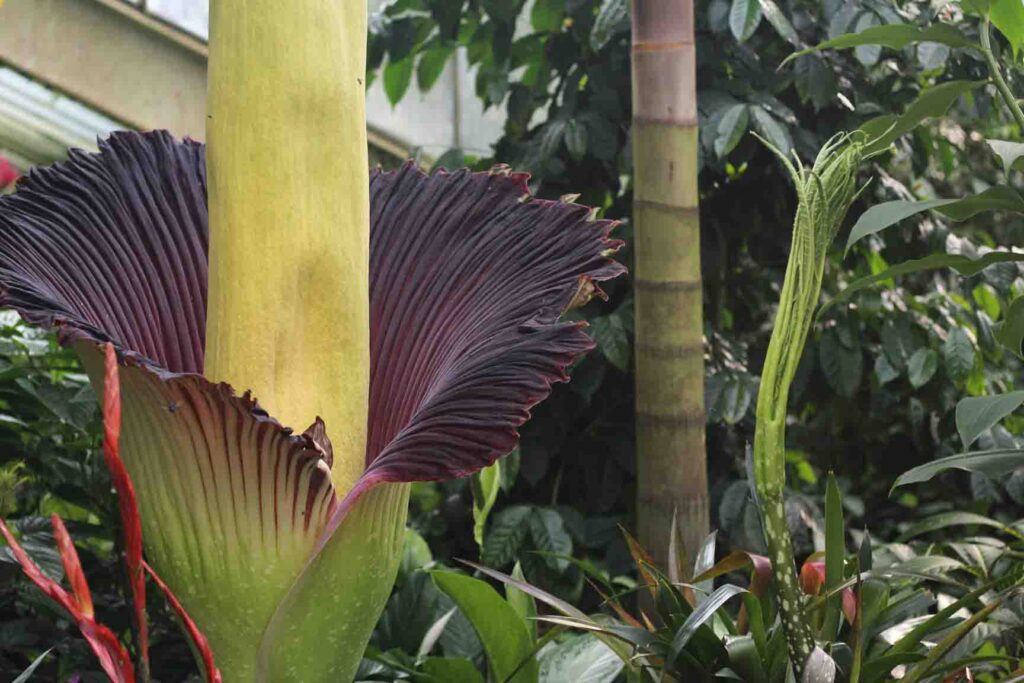
Well, that’s it for today from the photo-blog.

To find out more about this amazing specimen, you should definitely take a quick look at Kew’s step-by-step photo progression of the whole boom and bust cycle. And if you want to zoom into the molecular powers of the Amorphophallus’ stench, well then, you’ll have to check back in with us soon!
